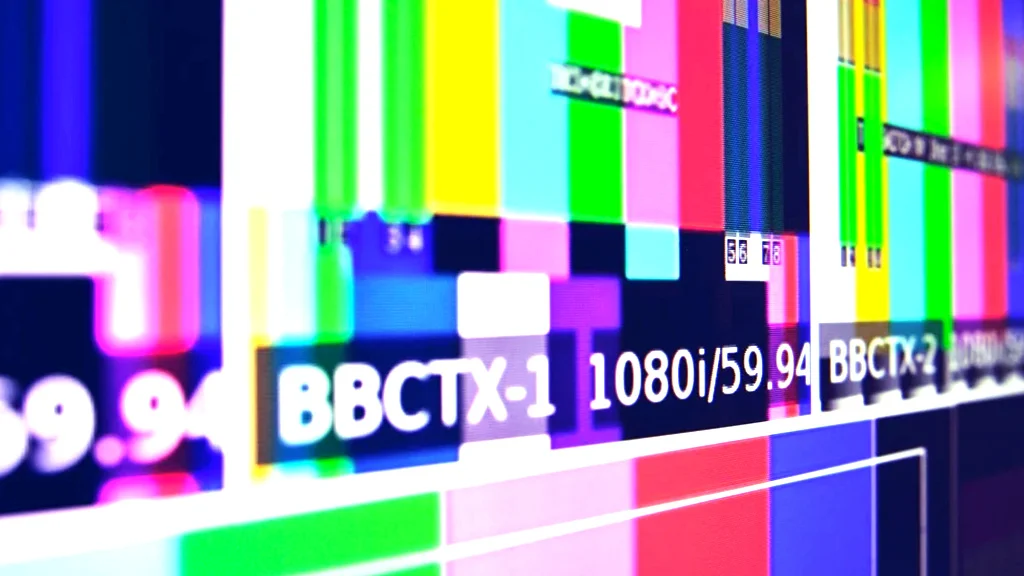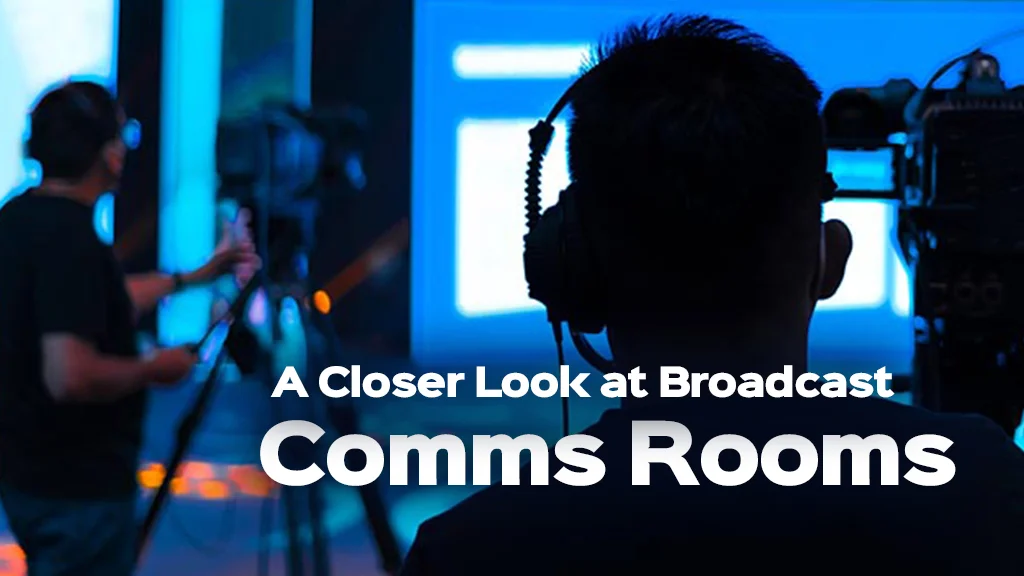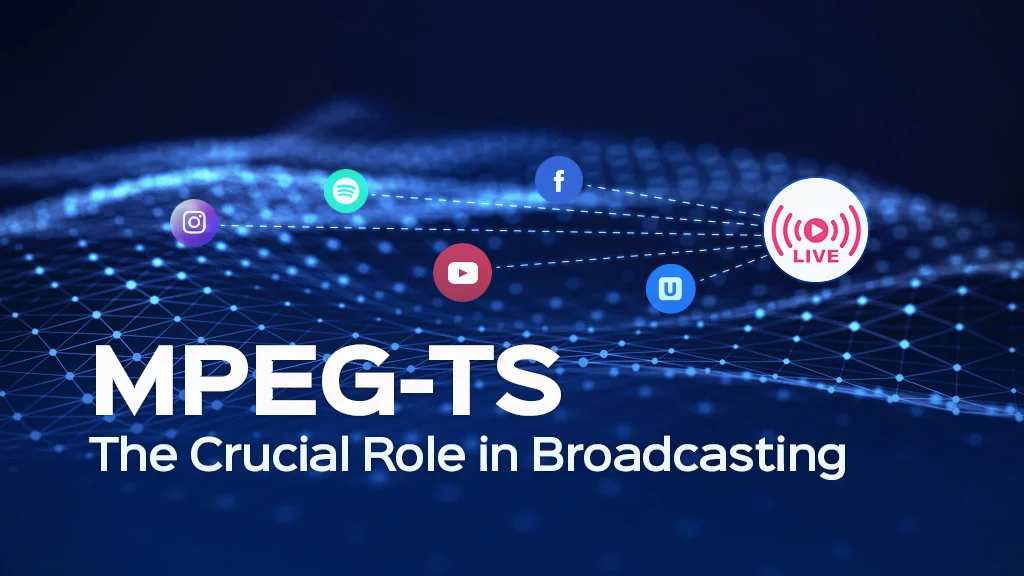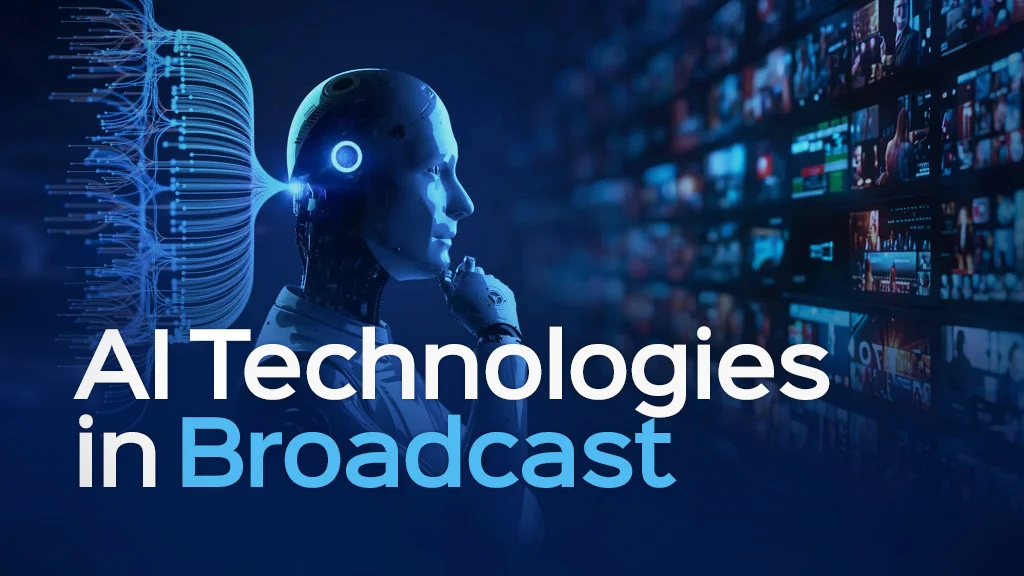
- Article
AI Technologies in Broadcast; Revolutionizing Production and Efficiency
The broadcasting industry is experiencing a profound transformation driven by advanced AI technologies that enhance content production, streamline broadcast workflows, and elevate viewer experiences. In terms of production efficiency, AI technologies simplifies various aspects of the broadcasting process, enabling high-quality content production in a more expedient and cost-effective flow.
Real-time analytics empower broadcasters to adjust their content and strategies on-the-fly, leading to optimized live broadcast effectiveness. AI in live broadcast enhances the overall production quality by automating camera operations and integrating interactive graphics, ensuring that crucial moments are captured and presented effectively. Additionally, AI algorithms can be very effective in post-production as well, automating video file editing and thereby increasing productivity.
AI also enhances viewer engagement by offering personalized experiences. Machine learning algorithms provide tailored content recommendations based on individual viewing habits, making it easier for audiences to discover programs they enjoy. In the realm of AI and broadcasting, the integration of these technologies not only enriches content delivery but also fosters a deeper connection between broadcasters and their audiences.
Revolutionizing the Broadcast Industry with AI
Here’s a closer look at how AI is revolutionizing the broadcast industry:
1. Automated Content Creation
AI-driven algorithms can generate content, such as news articles, sports highlights, and even scripts for shows. Natural language generation (NLG) technology allows broadcasters to produce reports quickly based on real-time data. This capability enables news outlets to keep pace with the fast-moving news cycle while ensuring accurate and timely reporting.
2. Intelligent Editing Tools
AI tools in broadcasting can assist editors by automating mundane editing tasks, such as cutting footage, color correction, and sound enhancement. Machine learning algorithms can analyze video content, tagging scenes and suggesting edits based on themes or specific criteria. This technology reduces the time spent in post-production and helps creatives focus on the more artistic aspects of editing.

3. Personalized Content Recommendations
AI enables broadcasters to analyze viewer data to deliver personalized content recommendations. By tracking viewing habits, preferences, and behavior across platforms, AI systems can suggest shows or segments that align with individual viewer tastes. This personalization helps improve viewer engagement and retention, ultimately leading to greater audience loyalty.
4. Enhanced Viewer Analytics
AI-driven analytics tools provide broadcasters with deep insights into audience behavior and engagement. By analyzing data from various sources, such as social media interactions and viewership trends, AI allows broadcasters to better understand which content resonates with their audience. This information can inform programming decisions and marketing strategies.
5. Improved Audio and Visual Quality
AI advantage in broadcast is evident in its ability to significantly enhance audio and visual quality during broadcasts. Technologies like AI-powered noise reduction, up scaling low-resolution video, and real-time graphics rendering help achieve a polished final product. AI algorithms can also analyze and adapt the feed to provide the best possible viewing experience, depending on bandwidth and device capabilities.
6. Automated Translation and Captioning
AI-driven transcription and translation services can automate the creation of subtitles and captions, making content accessible to a broader audience. This technology not only speeds up the localization process but also supports compliance with accessibility standards, ensuring inclusivity for hearing-impaired viewers.
7. Machine Learning in Advertising
AI enables targeted advertising by analyzing viewer data to deliver personalized ad experiences. Using predictive analytics, broadcasters can optimize ad placements and increase advertising revenue by ensuring that the right ads reach the right audiences at the right times.
AI in Live Broadcast Media and Event Production
AI is significantly reshaping the landscape of live broadcasting and event production across various domains, including sports, news, and entertainment. Here’s an overview of how AI is being integrated into live broadcasts across these sectors:
AI in Sports Broadcasting
A. Enhanced Real-Time Analytics
- Player and Game Analytics: AI can analyze player performance metrics in real-time, providing broadcasters with insights like player statistics, movement patterns, and strategies. This information helps commentators deliver informed discussions during live telecasts.
- Predictive Analytics: AI algorithms can predict game outcomes based on historical data and real-time statistics, enhancing viewer engagement through interactive features like betting predictions.
B. Automated Production
- Camera Control and Tracking: AI in sports broadcasting automates camera operations, utilizing computer vision to track player movements and select optimal camera angles during fast-paced action, ensuring that crucial moments are captured effectively.
- Highlight Generation: AI-powered tools can automatically identify and compile highlight reels from live broadcasts, providing instant recaps for viewers and social media dissemination.
C. Enhanced Audience Experience
- Interactive Graphics: AI in sport broadcast production integrates interactive graphics that provide viewers with real-time game stats, player information, and other data overlays, creating a more engaging watching experience.
- Personalized Content: By analyzing viewer preferences, sports broadcasters can tailor content and notifications based on teams, players, or events of interest, ensuring a relevant viewing experience.
Summary, AI in sports broadcasting is particularly transformative, providing enhanced real-time analytics and automated production capabilities. AI can track player movements, generate highlight reels, and deliver personalized content to viewers, significantly enriching the sports viewing experience.

AI in News Broadcasting
A. Automated News Delivery
- Real-Time Reporting: In the realm of news broadcast AI, machine learning algorithms can synthesize information from various sources, enabling the rapid generation of news reports during live coverage of breaking news events.
- Speech and Voice Recognition: Voice recognition technology allows journalists to transcribe interviews or speeches in real-time, improving the accuracy and speed of news delivery.
B. Content Moderation and Analysis
- Sentiment Analysis: AI can assess public sentiment on social media regarding news topics, providing broadcasters with insights into audience reactions and guiding editorial decisions.
- Fact-Checking: AI tools can assist in verifying facts quickly during live broadcasts, ensuring the accuracy of information shared with viewers.
C. Enhanced Viewer Engagement
- Real-Time Polling and Interactive Features: Broadcasters can leverage AI to conduct real-time audience polls or Q&A sessions during live shows, fostering viewer interaction and engagement.
- Customized News Feeds: AI can curate and deliver personalized news feeds to viewers based on their interests, ensuring that each individual receives the most relevant updates.
AI in Entertainment Event Production
A. Event Coverage and Management
- Automated Cameras and Drones: AI-powered cameras and drones can provide dynamic aerial views and multi-angle coverage without the need for extensive crew involvement, capturing unique perspectives during live events.
- Live Streaming Optimization: AI algorithms can adjust video quality dynamically based on bandwidth, providing uninterrupted streaming experiences for viewers, regardless of their internet connection quality.
B. Interactive Experiences
- Augmented Reality (AR) Integration: AI enhances live event experiences through AR applications that allow viewers to interact with the broadcast in real-time, such as viewing additional information about performers or elements on stage.
- Fan Engagement: AI can facilitate crowd interactions through machine learning platforms that analyze audience reactions, tailoring the event experience based on real-time feedback.
C. Marketing and Promotion
- Targeted Advertising: AI-powered tools analyze audience demographics and behaviors to deliver targeted advertisements during live events, maximizing advertising revenue and ensuring message relevance.
- Social Media Engagement: AI can monitor and engage with audience discussions on social media platforms during live events, amplifying coverage and drawing in viewers.
Read also :
Video Transport in Broadcast Industry
Optimizing Broadcasting Operations with AI
By leveraging AI in broadcast media, organizations can not only improve operational efficiency but also create compelling, personalized experiences that resonate with viewers, ensuring they remain engaged and satisfied.
Quality Control (QC) with AI
A. Automated Quality Checks
- Content Analysis: AI algorithms can automatically analyze video and audio content to detect issues such as loudness variations, visual artifacts, or sync problems. This ensures that only high-quality content is broadcast.
- Standards Compliance: AI can monitor broadcasts in real-time for compliance with broadcasting standards and regulations, catching errors before they impact the audience.
B. Machine Learning-Based Feedback
- Adaptive Learning: AI systems can learn from historical data to improve QC processes, identifying common issues and suggesting preemptive measures to avoid them in future broadcasts.
- Post-Broadcast Analysis: After a broadcast, AI tools can evaluate the content’s performance and quality, providing actionable insights that help improve future productions.
Automated Workflows in broadcast industry
A. Streamlining Production Processes
- Robotic Process Automation (RPA): AI-driven RPA can automate administrative tasks such as scheduling, resource allocation, and paperwork, freeing up creative teams to focus on content development.
- Content Tagging and Organization: AI in broadcasting can automatically tag and categorize content based on themes, keywords, or visuals, simplifying content management and retrieval for broadcast teams.
AI in broadcasting can automatically tag and categorize content based on themes, keywords, or visuals, simplifying content management and retrieval for broadcast teams.
B. Intelligent Resource Management
- Dynamic Resource Allocation: AI systems can monitor ongoing projects and dynamically allocate resources—human or technical—based on real-time demands, optimizing production schedules and efficiency.
- Predictive Maintenance: AI can analyze equipment performance data to predict maintenance needs, reducing downtime and ensuring that broadcasting infrastructure remains operational.
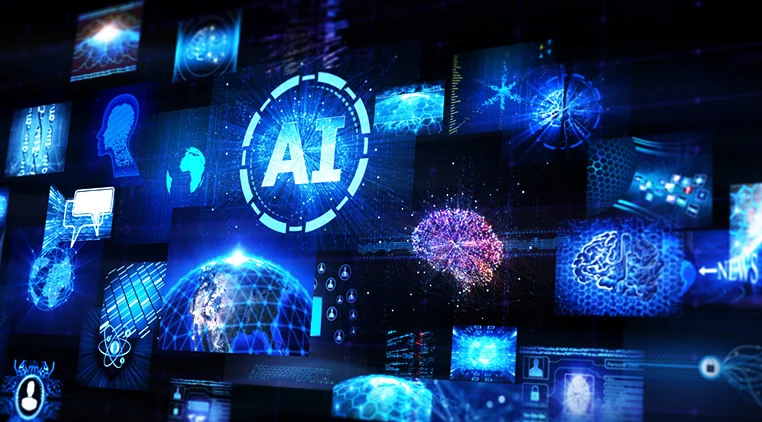
Content Creation and Curation with AI in Broadcasting
A. AI-Assisted Content Generation
- Script Writing and News Generation: AI can assist in generating scripts and news articles by analyzing data feeds and creating drafts that human editors can review and finalize. This, speeds up the content creation process, particularly for breaking news.
- Highlight Reel Generation: AI can automatically identify and compile highlights from live sports events or shows, creating engaging recap videos quickly and efficiently.
B. Personalization and Recommendations
- Content Recommendations: The AI advantage in broadcast lies in its ability to analyze vast amounts of viewer data, enabling broadcasters to create tailored content recommendations and interactive experiences. This personalization fosters deeper audience engagement and satisfaction.
- Dynamic Content Curation: AI can curate content dynamically based on current events or trending topics, ensuring that broadcasters are consistently offering relevant programming.
Viewer Engagement and Analytics with AI
A. Enhanced Audience Insights
- Behavioral Analytics: AI tools can analyze viewer behavior patterns, allowing broadcasters to tailor content and marketing strategies based on audience preferences and trends.
- Sentiment Analysis: By examining social media interactions and viewer feedback, AI can gauge audience sentiment toward broadcasts, helping organizations improve engagement strategies.
B. Interactive Features
- Real-Time Polls and Feedback: Broadcasters can use AI in live broadcast to implement real-time audience polling during live shows, increasing interaction and allowing viewers to actively participate in discussions.
- AI Chatbots and Virtual Assistants: AI-powered chatbots can provide viewers with instant information about programming, schedule changes, and content recommendations through various platforms.
Enhanced Distribution and Accessibility in Broadcasting
A. Intelligent Distribution Platforms
- Content Distribution Optimization: AI can analyze viewership data to optimize content distribution, ensuring that broadcasts reach the right audience at the right time while maximizing capacity across various platforms.
- Automated Metadata Generation: AI can generate metadata for content automatically, enhancing discoverability on platforms and streaming services.
B. Accessibility Enhancements
- Automated Captioning: AI-driven transcription services can produce accurate captions in real-time or post-production, ensuring content is accessible to hearing-impaired audiences.
- Language Translation: AI in media broadcast can translate content into multiple languages quickly, broadening the audience reach and catering to diverse viewer demographics.
The Future of AI in Broadcast Production
The future of broadcast production is being shaped by the integration of AI in broadcasting technologies, which enhance efficiency and viewer engagement. In broadcast production control room , AI tools streamline workflows, automate mundane tasks, and improve content quality. For instance, AI in broadcast production enables real-time analytics, allowing broadcasters to adjust their strategies dynamically during live events. Embracing AI will become essential for broadcasters aiming to stay competitive and relevant in an ever-evolving media landscape. The key to success will be leveraging AI not just as a tool, but as a powerful partner in creative storytelling and audience connection.


